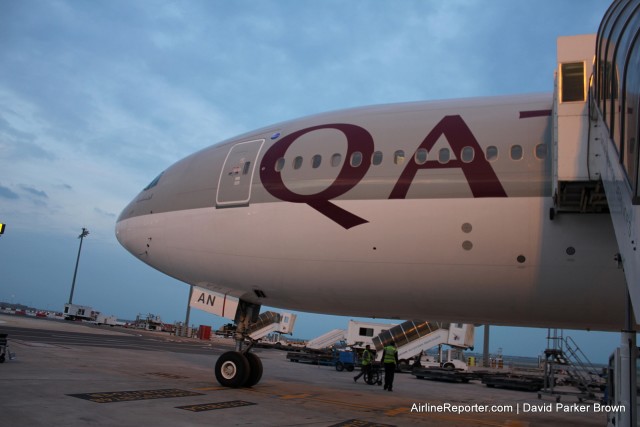
Tarmac de-planing from a Qatar 777-300ER in Doha
QATAR AIRWAYS BOEING 777-300ER BUSINESS CLASS REVIEW BASICS:
Airline: Qatar Airways
Aircraft: Boeing 777-300ER
Departed: Washington Dulles International Airport (IAD)
Arrived: Hamad International Airport (DOH)
Stops: Non-stop flight
Class: Business Class
Seat: 4E, inside middle [but also sat in 1A bulkhead on a leg and 2F on another]
Length: About 12.5 hours
Cheers: Great service and the food was (mostly) delicious.
Jeers: The hard product is getting a bit dated.
Overall: After so many miles and so many hours, I was still ready for some more.
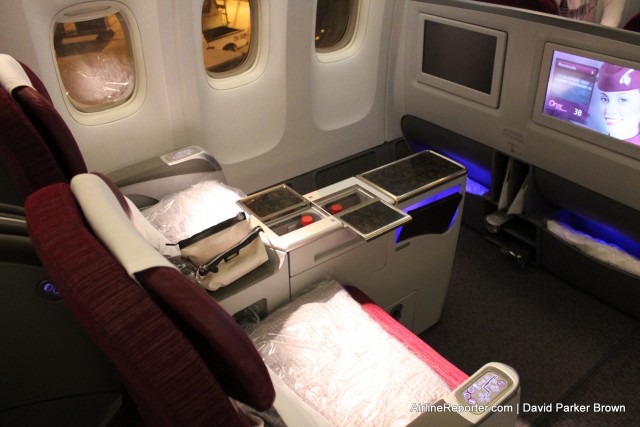
The business class seat on the Qatar Boeing 777-300ER. Notice the blue lighting.
Recently, I flew quite a few miles on a Qatar Airways Boeing 777-300ER in business class. Although my review will mostly concentrate on the leg from Washington Dulles (IAD) to Doha, Qatar (DOH), bits and pieces of my other legs, which were DOH to Bangkok (BKK) and then back towards home DOH-IAD will also make their way into this review. After flying over 17,000 miles on the product in a short amount of time, I think I got a pretty good feeling what it is all about.
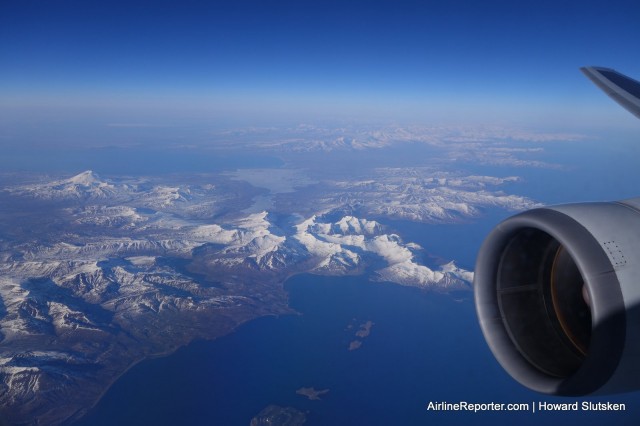
This is the reason that most of us fly, being able to look down at the earth below us.
Flying around the U.S. is something that so many people do on a regular basis. The process used to be much more stressful. Having to track down a travel agent or even buying your ticket at the counter, hoping that there was a seat available. Today, we are able to book our tickets online, months in advance and can have increased confidence that we have a seat on the plane. But even in today’s hi-tech aviation business, there are still times that almost make it feel low-tech and high-stress. I experienced one recently on a flight to Las Vegas. That weekend in Vegas may have been fun, but for this AvGeek it was extremely stressful and I am not even sure if it was worth it.
There are many people who have airline benefits and have the ability to fly for free around the world. I have flown on these “buddy passes” before and previously, and it was not that bad of an experience. However, this trip to Vegas has seriously made me reconsider ever using one again.
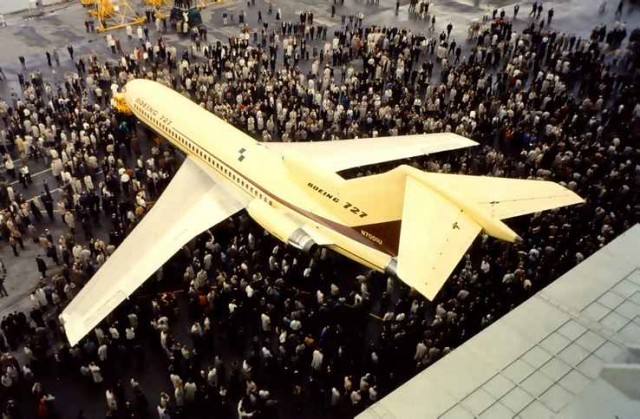
Roll-out of E1 (N7001U) from Boeing Renton Plant, 27 Nov 1962 – Photo: Bob Bogash
More than 27 years after it was gifted to the Museum of Flight, the first Boeing 727 is still being restored at the museum’s Restoration Center at Paine Field in preparation for its last flight down to Boeing Field.
This plane first rolled out of the factory on November 27, 1962, and took its first flight (from Renton Field to Paine Field) on February 9, 1963. It was then used for a year as a Boeing test flight aircraft before being delivered to United Airlines on October 6, 1964.
With United, it flew 64,495 hours, with 48,060 take-offs and landings. After being repainted to its original livery, N7001U flew, in January 1991, from Boeing Field to Paine Field, where it has been sitting ever since.
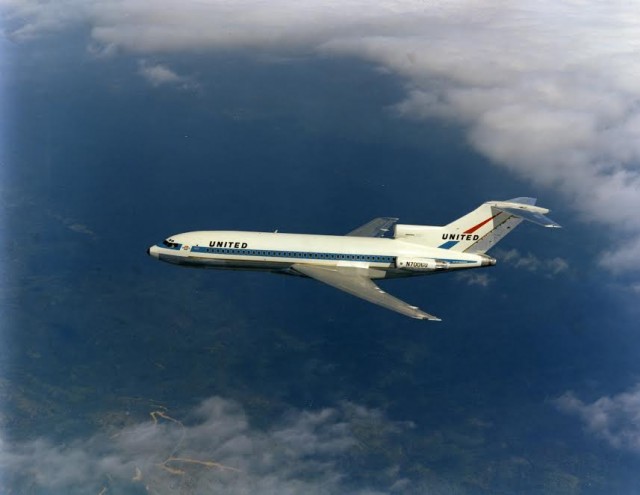
This is N7006U, but N7001U sported this same livery in 1964 – Photo: The Boeing Company
Restoration work has stopped and started more than once over the years. Some restoration work started in 1997, but was hampered by the lack of 727 parts. (United had removed any usable components to support their other 727s still in service at the time). Sadly, the plane was left open for several years after it was delivered, and many parts “disappeared” during that time, as well.
A new restoration effort started in May of 2004, after the donation of N124FE (aka Marcella) from FedEx. That plane had the majority of the components needed, but additional parts were taken from three other 727s as well.
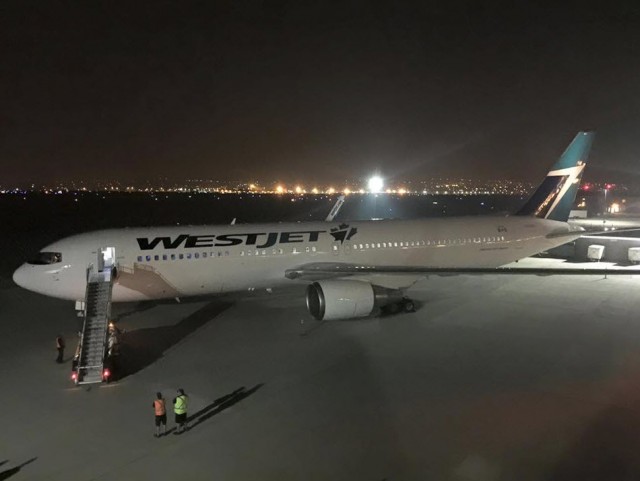
WestJet’s first 767 arrives at YYC – Photo: WestJet
UPDATE: August 27th – Well, it looks like the response to WestJet’s new logo was so overwhelming that the airline has decided to add it to the rest of its aircraft! WestJet’s Robert Palmer says, “The logo shows how proud we are to be a Canadian company and helps us introduce ourselves to new geographies we’ve never served before. Our intent was to use the logo on the 767s only, given the international nature of the routes they will serve as of next spring, but the response has been so positive that we’ve decided to use it across our entire fleet. It will take time, but eventually all WestJet aircraft will sport this proud new logo.’ Although Palmer couldn’t directly point to the positive feedback from our story, he says “We actually tested it [the logo] using focus groups and it was off the charts.”
WestJet Airlines began operations in February of 1996, with a fleet of three 737-200s flying between five cities in Western Canada. Since that time, the carrier has grown to become an international airline, serving over 90 destinations with a fleet of 108 737-600s, -700s, and -800s. In 2013, it launched regional airline WestJet Encore, now with 22 Bombardier Q400s.
The airline hasn’t really changed its teal-and-blue colored livery since its first flights, but has Disney-partnered ’œlogojet’ 737s flying, along with two planes painted with the airline’s custom-designed tartan to celebrate its Halifax, Nova Scotia to Glasgow, Scotland service. And every one of WestJet’s aircraft proudly flies the Canadian flag on the fuselage, near the rear exit doors.
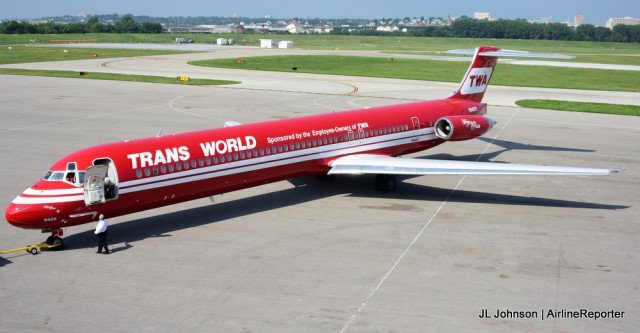
Wings of pride arrives home at the downtown KC Airport
This morning, I had the honor of welcoming an iconic piece of aviation history back home to Kansas City, MO. I watched the event unfold while standing on the roof of what was once an early Trans World Airlines (TWA) stronghold.
Looking into the sky, I could see a tiny red speck on the horizon that slowly grew into a beautiful red/white MD-83 (reg: N948TW). It was something unique, and certainly not common at the Charles B. Wheeler downtown airport (MKC).
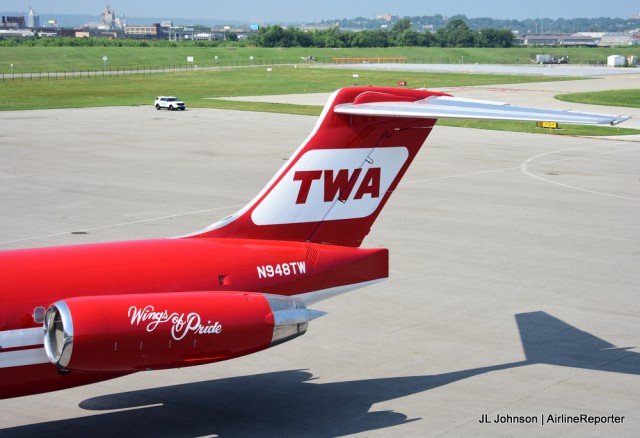
Wings of Pride N948TW
Soon one of the most iconic (albeit nearly forgotten) planes to grace the Trans World fleet landed and taxied to within a few yards of TWA’s first headquarters in Kansas City, and former office of Howard Hughes himself.
The TWA Wings of Pride, after 27 years of service across the world, had finally reclaimed its greatest livery and arrived back to the birthplace of its former airline, courtesy of TriStar History and Preservation and their patrons.







